Challenges & Key Issues of Constructing 'MEC-Ready' 5G Bearer Networks for Carriers
5G applications are widely used across various industries. A newly developed mode "5G+edge computing+AI" enables carriers to help vertical industries realize digital and intelligent transformation. This brings four new challenges for operators' bearer networks. To build an MEC-ready 5G bearer network, carriers need to fix six key issues.
January 20, 2020

By Dr. Song Jun, Senior Solution Architect, Huawei Datacom Product Line
5G applications are widely used across various industries. A newly developed mode “5G+edge computing+AI” enables carriers to help vertical industries realize digital and intelligent transformation. This brings four new challenges for operators’ bearer networks. To build an MEC-ready 5G bearer network, carriers need to fix six key issues.
MEC Is Key in the 5G Age to Digitally Transform Thousands of Industries
Application localization, where data is not transmitted out of the campus, high-bandwidth content distribution, and low-latency computing localization all boost the migration of service contents, applications, and computing to the edge, propelling the development of multi-access edge computing (MEC) and moving the core network of 5G downwards.
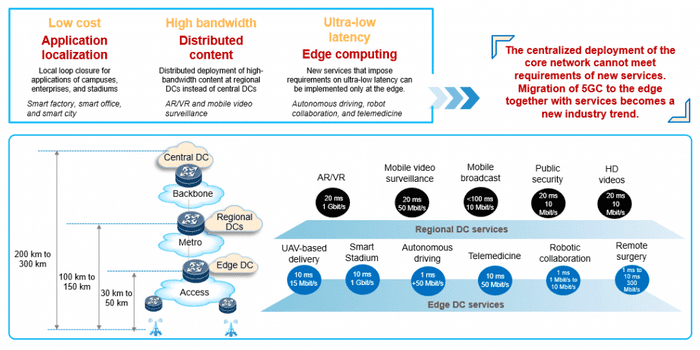 Figure 1-1: Migrating services to the edge advances MEC development and moves the 5G core network downwards
Figure 1-1: Migrating services to the edge advances MEC development and moves the 5G core network downwards
The 5G core network uses a flexible architecture where the user plane function (UPF) and session management function (SMF) are separate. This way, UPFs can be utilized as needed. One SMF can manage multiple UPFs simultaneously while maintaining the high performance of the 5G core network. 5G brings a number of new advantages to MEC, including:
The core network’s UPF is moved downward to the enterprise campus, ensuring that key service data does not leave the campus and providing a low-latency bearer solution. Carriers can configure a UPF independently for each enterprise, customizing wireless services for enterprise users.
Carriers can provide 5G communication service capabilities such as positioning and wireless communication capabilities that are open and programmable, and can be utilized by enterprise users and integrated into enterprises’ service systems. Therefore, enterprises can create their own 5G innovative applications.
The 5G MEC system that is moved downwards is directly interconnected with the enterprise network, enabling applications distributed on the two network systems to be integrated and streamlined in real time, and facilitating the development of customized innovative applications.
Four Challenges Facing Carriers’ 5G MEC Bearer Network
Traditional 4G bearer networks mainly carry north-south traffic. Numerous carriers adopt the Layer 2+Layer 3 mode, which is no longer suitable for transmitting 5G MEC traffic locally. 5G MEC brings four new challenges to carriers’ bearer networks:
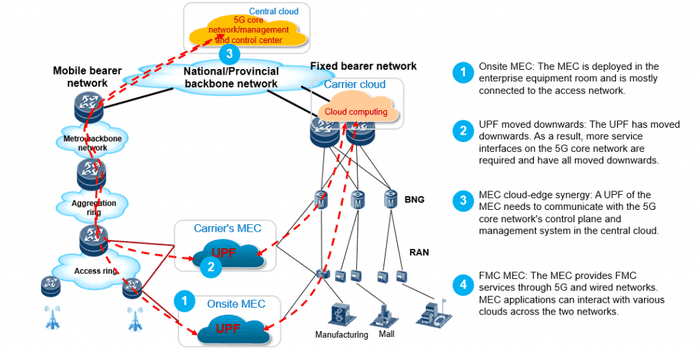
Figure 1-2: New challenges for carriers in deploying their 5G MEC bearer networks
MEC deployed locally in enterprise campuses is a brand new application scenario. Vital enterprise service data must not be transmitted out of the campus, which poses new challenges to the carrier’s access network.
The UPF of the MEC is moved downwards. Consequently, UPF’s interfaces such as N4, N6, N9, and 5GC OAM interfaces on the 5G core network are also moved downwards, and the L3VPNs on the IP backbone network for 4G core networks are moved down to the UPF’s access point. The new challenges have arisen from the large-scale deployment of 5G MEC deployment.
The UPF of the MEC needs to communicate with its control plane (SMF) and the management & control system of the 5G core network in the central cloud, with the high-performance communication requirements of the telco cloud. MEC applications may be a part of cloud computing in a data center (DC) and are deployed at the edge. They need to interconnect and collaborate with this cloud computing applications. This poses a new challenge to edge-cloud synergy on carriers’ bearer networks.
MEC supports integrated access on fixed and mobile networks and provides a seamless fixed-mobile convergence (FMC) service. The bearer network needs to provide MEC with connections across the mobile and fixed bearer networks, to provide the interworking of services between the MEC and central cloud, as well as between MECs. This poses new challenges in the network architecture, especially to the carriers who have both the mobile bearer and fixed bearer metropolitan area networks (MANs).
Six Key Issues of Carriers’ 5G MEC Network Architecture Model and Network Construction
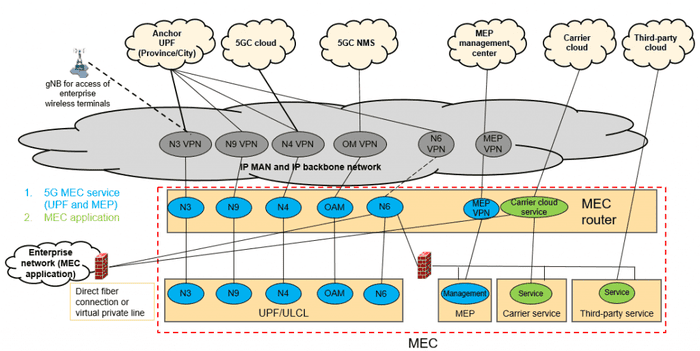
Figure 1-3: Carrier bearer network architecture model from MEC’s viewpoint
The bearer network architectures of different carriers are varied. The following sections introduce a bearer network architecture model from MEC’s viewpoint in Figure 1-3.The aforementioned 5G MEC network communication model requires carriers to fix the following six key issues when constructing MEC-ready bearer networks:
The shortest MEC access network: Carriers need to provide the shortest path for the service flows of N3 interfaces from the gNB to MEC UPFs. In the onsite MEC mode, N3 interface service flows need to be forwarded to MEC through mobile bearer routers in the campus directly. In addition to ensuring low latency and saving bandwidth on the carriers’ network, this also ensures that enterprise’s key service data does not leave the campus area, as shown in Figure 4. This requires the MEC access router to forward data packets through the shortest path. To do this, the MEC access router is required to provide the necessary routing capability (Layer 3 forwarding to edge).
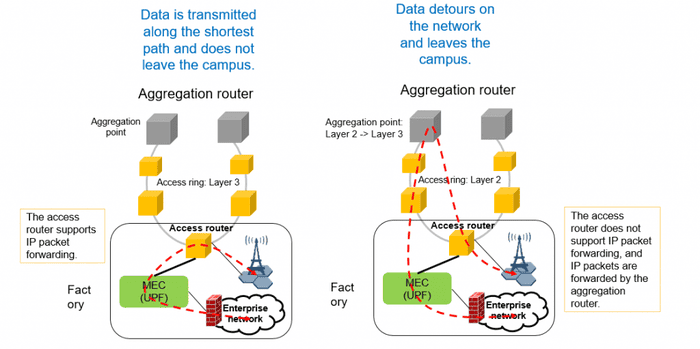 Figure 1-4: MEC needs a low-latency access network without a detour
Figure 1-4: MEC needs a low-latency access network without a detour
Low-latency slicing: To meet the requirements of MEC applications for low latency, high security, and high reliability, carriers’ bearer networks need to provide low-latency slicing network services for enterprise users. The MEC sliced network includes the gNBs, the mobile bearer network (between the gNBs and MEC), and UPF. That is, all the network elements (NEs) that service flows from enterprises pass through to reach MEC. The fewer the NEs that the packet passes through, the simpler the slicing and the shorter the transmission latency are.
Multi-point communication from MEC: Service flows among the MEC and the 5G core network (N4 and OAM interfaces), MEP management platform, the other MECs are in multipoint-to-multipoint communication mode and need to be supported by L3VPN. The MEC bearer network needs to provide L3VPN capabilities on the entire network, including the access network; that is, L3 VPN to the network edge. In addition, the L3VPN needs to span multiple network segments such as the MAN and backbone network. The MEC bearer network has increased in complexity compared with the 4G bearer network in terms of the number of NEs, as a large number of UPFs have moved downwards, and the network coverage, which covers from the access network to the backbone network. Therefore, a flexible and powerful L3VPN is required to support multi-point communication, as shown in Figure 5.
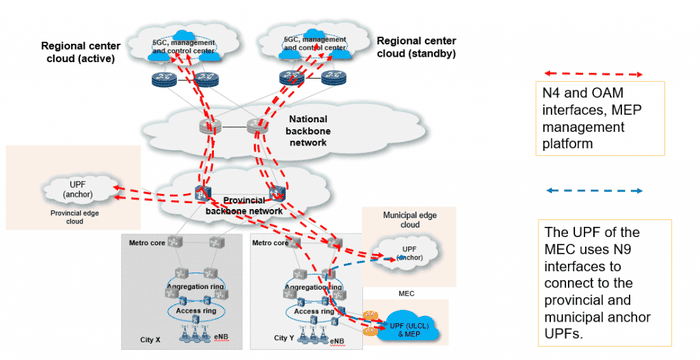 Figure 1-5: Management and control service interfaces across multiple networks
Figure 1-5: Management and control service interfaces across multiple networks
Communication capabilities integrated in the routers of the MEC system: Small- and micro-MECs are conventional in 5G MEC. Due to the cost and communication requirements, the MEC typically uses a one-layer integrated network model (as shown in Figure 6), while a data center often uses a complex multi-layer network architecture. The routers of MEC need to provide all the required communication functions, such as interworking between the devices in MEC, reliable Layer 2 & Layer 3 connections between VMs, interworking and reliable communication with an external IP network (IP RAN), and edge-cloud synergy. UPF as Network Function Virtualization (NFV) can run on multiple VMs, to improve performance and reliability. The MEC routers need to provide equal-cost multi-path routing (ECMP) for 16-path load balancing currently for high-performance UPF.
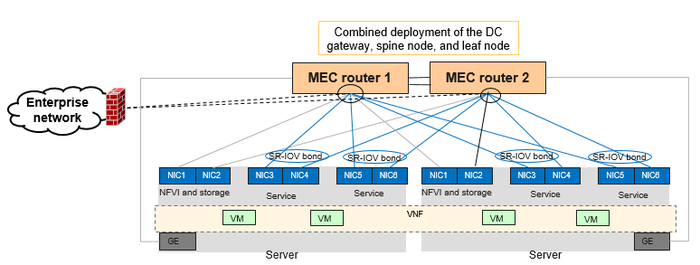
Figure 1-6: MEC network model
Edge-cloud synergy: MEC UPF used as the data plane of 5GC is moved to the edge, and applications function as real-time processing units of cloud services and are moved to the MEC. All these require the carrier’s bearer network to provide reliable cloud-edge communication capabilities and support edge-cloud synergy in automatic deployment and operations and maintenance (O&M). For details about UPFs’ edge-cloud synergy, refer to the telco cloud bearer solution.
Secure interworking between two networks: A carrier’s MEC network needs to interwork with an enterprise network to enable the enterprise to integrate 5G communication capabilities and MEC applications into enterprise service systems. Currently, MEC routers are used to communicate with enterprise networks. As network security is a major concern for both enterprise networks and carrier networks alike, a firewall-based network security solution is required to ensure high security.
Conclusion
5G mobile communications systems have made many improvements in supporting vertical industries, such as realizing low-latency wireless communication, a flexible core network architecture, and super uplink. These new features of 5G are what sets it apart from 4G. MEC is a new model for carriers to help vertical industries become digital and intelligent. It is also the beginning of widespread distribution of intelligence on the network. In the future fully connected intelligent world, edge computing-based intelligence will become prominent on the network. Without considering the MEC’s network requirements for vertical industries, the 4G bearer network is constructed for the typical mobile phone users, whose traffic model is in the north-south direction with centralized model of the 4G core network. Therefore, 5G MEC bearer network construction is so much more than a simple bandwidth upgrade of the 4G network.
About the Author:
Dr. Song Jun: Senior Solution Architect of Huawei Datacom Product Line, Co-Chair of the ECNI (Edge Computing network Infrastructure) Work Group of the Edge Computing Consortium. Since 1991, he has been engaged in research on data communications technology. He has worked on network planning in a tier-one multinational carrier in the United States and was a member of the expert working group of Chinese Next Generation Internet project. ([email protected]).
Read more about:
Vendor SpotlightsYou May Also Like










_1.jpg?width=300&auto=webp&quality=80&disable=upscale)
